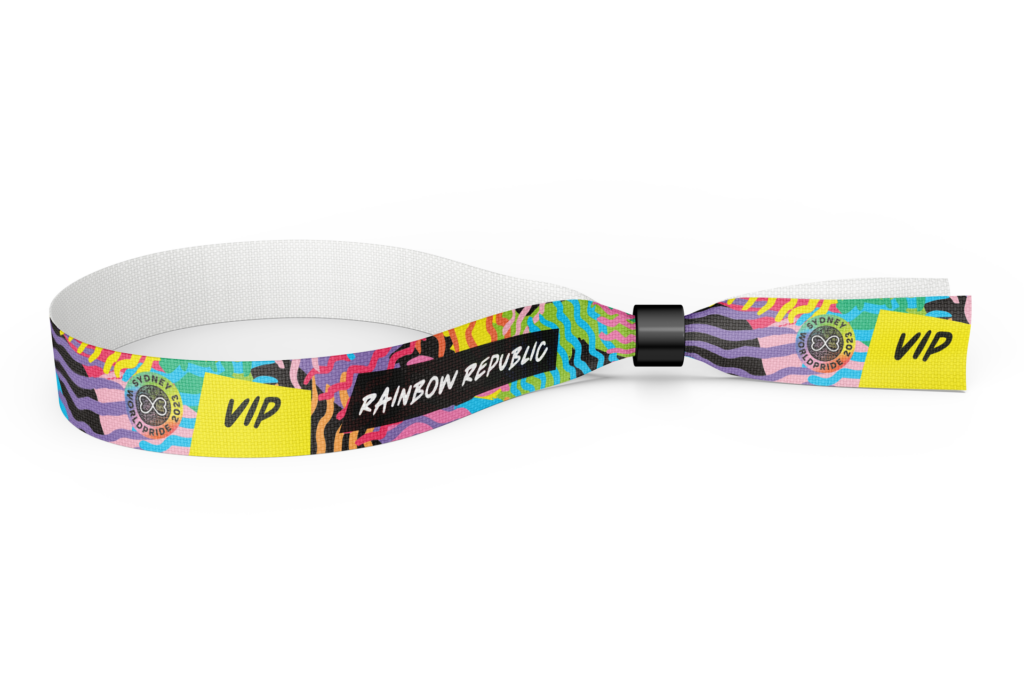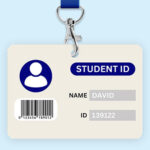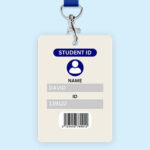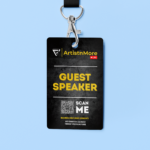Blog Open Day Essentials: Wristbands, Ticket Books & Lanyards for Schools and Universities

Wristbands, ticket books, and lanyards play an essential role in event logistics and visitor management. They streamline check-in, segment visitor groups, and offer opportunities to reinforce campus branding. Using these tools is often the easiest way of offering visual verification for access control while helping users by implementing wayfinding tools, for example.
In this article, we’ll also highlight some of the ways that wristbands, ticket books and lanyards can provide real-time analytics, data capture, and post-event analytics for smarter decision-making. We’ll fully discuss how these tools are used for visitor segmentation, provide sponsorship value and can be made from sustainable materials.
Let’s get into it.

Wristbands, ticket books, and lanyards are essential tools for events, as they offer opportunities for streamlining check-in, provide clear role identification, and reinforce branding strategies.
They are crucial tools for managing visitor flow, enhancing security, and offering opportunities for sponsorship and technology integration.
These tools are often used to create accreditation tiers. For example, different-coloured lanyards are often used to signal access clearance. Some colours may signal access to VIP areas. This is also ideal for security, as they can quickly identify people who may be in off-boundary areas.
Wristbands, ticket books and lanyards are often used to help sponsor visibility, and can be made with eco-friendly methods and materials. We’ll discuss just how this is achieved, as well as discuss tech implementations, data retrieval and analytical opportunities.

Accreditation levels and tiers are essential for event access control and clarity when it comes to school and university events. They allow open day event organisers to manage attendee flow and improve security by visually and electronically verifying attendees.
These tools can ultimately prevent unauthorised access to restricted areas and ensure that staff can easily identify who belongs where on event days.
When it comes to school and university open days, various accreditation tiers may be required. Accreditation tiers include Speakers, media, VIPS, parents, and students.
These different tiers are often colour-coded but may also include bold titles, pictures, and QR codes. They can include single-day, multi-day credentials, and inclusive accreditation.
To make your event flow as smoothly as possible, it is important to set up dedicated stations for each attendee type to minimise queues and wait times.
Establish a clear re-issuance protocol for lost or multi-day credentials. Attendees who lose their speaker badge, VIP credential wristband, or media pass can report to a designated help desk, where their original registration can be verified.
Colour-coding Tyvek wristbands and lanyards is a simple way of creating entrance groups that attendees and event organisers can easily visualise. Using colour-coded Tyvek Wristbands not only helps with wayfinding and simplifies navigation for first-time visitors but also supports security through their tamperproof design. This is especially effective on an open day as it reduces confusion and streamlines movement from class to class. For example, you might issue red Tyvek wristbands for campus tours and blue for academic talks.
To support this flow segmentation, some simple signs can help. Directional tags and event signage can be used alongside lanyard features, such as tags directing an attendee to different areas. These can be reinforced by using wayfinding maps with matching colour schemes.
Tracking and reporting on visitor flow can easily be done on open days using wristbands and lanyards by simply counting attendees with specific colours at certain checkpoints. This allows for session flow management and helps organisers identify popular routes and potential bottlenecks that need to be managed. This helps university and school event planners to better organise future events to elevate the attendee experience.
Sponsor-branded wearables drive revenue and visibility for your sponsors, your school, or your university on an open day. Printing sponsor logos on Tyvek wristbands, lanyards, or ticket books is an easy and cost-effective way to increase passive brand exposure throughout an event.
This wearable advertising ensures a sponsor’s brand is seen by every attendee, which significantly increases their brand recognition.
By using branding on lanyards and Tyvek wristbands used on open days, sponsors gain broad visibility and reach a large and diverse audience base. This persistent exposure reinforces their brand message and can be a powerful incentive for building long-term brand loyalty.
Open day event organisers can offer sponsorship packages in order to provide funding for ticketing, in exchange for brand exposure. Many sponsors will do this by providing these wearables at no cost to the event in exchange for a top-tier sponsorship. Agreements like these benefit both parties and are popular marketing schemes.
There are many ways to do this without clashing with your own branding. Pricing tiers can be tied to logo size and placement, ensuring sponsor branding is noticeable but not intrusive.
For most events, especially those that align with environmental values, choosing eco-conscious wearables is essential. The Wristband Co. provides a variety of sustainable options to minimise your open day’s environmental impact, including recycled PET wristbands made from repurposed plastic bottles, bamboo lanyards woven from a rapidly renewable resource, and compostable paper ticket books that break down naturally.
For a durable, zero-waste solution, consider reusable vinyl wristbands that attendees can keep.
For a full guide for step-by-step sustainable event executions, check out our eco-friendly blog post.

Radio Frequency Identification, also known as RFID wristbands and barcode wristbands, fundamentally transforms open-day organisation logistics by speeding up check-ins and effectively minimising bottlenecks. These wristbands can simply be tapped or scanned and effectively replace manual checks, speeding up the entrance process. This contactless wristband scanning is especially useful for high-traffic entry points during an open day.
Additionally, this technology enables real-time data collection on attendee entrance and movement during the open-day event. The continuous data stream informs event management and staff needs.
For example, it allows organisers to redirect security to a crowded area or open more food stalls in a popular spot. The live attendee flow analytics allow for live, proactive adjustments, which in turn help to enhance safety and efficiency.
These wristband systems also facilitate seamless cashless payments by linking them to a credit card or a prepaid spending account. It allows attendees to make quick, secure purchases at food stalls or merchandise stands. This cashless system not only boosts vendor sales but also simplifies accounting and reduces the risk of misunderstanding and theft.
After the open day event, the data gathered from the wristbands can be integrated with event registration software. These systems provide a comprehensive overview of attendee behaviour, from entry and exit times to purchasing habits and session attendance. This invaluable post-event data reporting informs future open day event planning and helps organisers enhance staffing needs and costs.




Data obtained from RFID wristbands (or what’s displayed in the lanyard card sleeve) can provide crucial insights into event dynamics. For example, the attendance metrics give a precise count of visitors, while dwell time reveals which areas or sessions hold the most interest or pose the biggest potential for bottlenecks. Metrics such as flow analytics, on the other hand, map attendee movement, identifying bottlenecks and popular routes that may need more staff.
Data obtained from these tools helps organisers to understand attendee behaviour and optimise event logistics during a university or school open day.
There are 3 main metrics which are useful to look at, including: dwell time, flow analytics, and check-in speed. They directly inform organisers about portal layout optimisation, showing which areas need more space or resources. They also show which sessions are most popular and may warrant a larger venue or more frequent scheduling during the open day event.
Combining scan data with insights from surveys creates a powerful, comprehensive attendee profile. Scan data provides information on where people went and what they did, while survey data provides information on attendees’ motivations and other feedback. This survey integration allows organisers to understand both visitor patterns and people’s preferences and levels of satisfaction.
This information helps inform planners on layout optimisation, session planning, and staffing numbers for post-event analytics. For future events, you will be able to adjust the flow of your school or campus tours, place food stalls in high-traffic zones, and schedule popular sessions multiple times.
Integrating wearables such as Tyvek wristbands and lanyards into your open day provides a comprehensive event toolkit to enhance your guests’ visitor experience and helps you to boost operational efficiency.
These tools allow you to streamline the check-in process, visually differentiate roles with colour-coding, and provide a platform for sponsor branding. Real-time scanning and event analytics offer valuable insights into visitor flow and behaviour, informing your post-event improvements. They also allow you to plan for the future and ensure an even better open day.
These tools improve stakeholder engagement. They demonstrate a modern, professional approach and provide data to support strategic decisions.
If you’re curious as to how these wearables can enhance your event, contact The Wristband Co. to discuss your specific event needs and receive a tailored quote. You can give us a call on (08) 8363 4850, or send us an email at [email protected] to get in contact with one of our friendly team members.


Join our mailing list to receive product information, endless inspiration and 10% off your next order!
Monday – Friday 8:30 AM-8:30 PM
Saturday 10:00 AM-5:00 PM
Sunday CLOSED
38 Little Rundle Street Kent Town SA 5067
08 8363 4850
ABN: 62 239 772 879
The Wristband Co. is located on the traditional lands for the Kaurna people, and we respect their spiritual relationship with their Country. We also acknowledge the Kaurna people as the custodians of the Adelaide region and that their cultural and heritage beliefs are still as important to the living Kaurna people today.
Payments Accepted